#deco goals
Explore tagged Tumblr posts
Text



Source
299 notes
·
View notes
Text
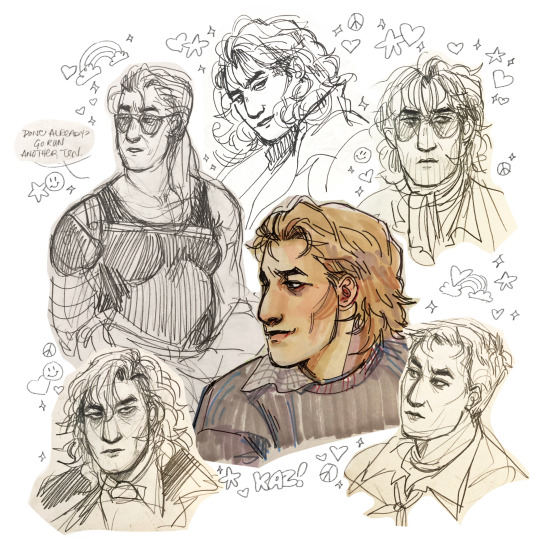
kaz!
#mgs#kazuhira miller#id in alt text#i swear to god ive only drawn kaz for like the past week and a half#just portrait after portrait page after page#i was going to say i dont know whats wrong with me but we all know the culprit is retail#anyways. i had way too much fun with the hand drawn deco stickers#also foxhound kaz is just based off a sarah connor screenshot. hashtag transition goals#i have a hard time drawing ponytails for whatever reason#but short hair kaz? mildly cursed. idk how i feel about it#well. that's enough from me today goodnight love u bye
120 notes
·
View notes
Text
spOOOOky arms under the cut

🤣this makes me laugh more than it should (dont worry there is a body i will be attaching to them)
8 notes
·
View notes
Text


🌃night club townie #1
#simblr#sims 4#ts4#goal it to make twenty unique-looking night club sims! ten male ten female and their all my cybergoth black folks#soooo if you need more black deco sims who don't look boring i might have you!#my sims
49 notes
·
View notes
Photo

Pink Bathroom - via x
#pink interior#interior design#interior#interiors#style inspiration#style#vintage architecture#mid century architecture#art deco architecture#80s interior#homedecor#home design#home decor#bathroom decor#bathroom#goals#bathtub#pink aesthetic#pastel#pastel aesthetic#retro aesthetic#vintage aesthetic#80s nostalgia
11 notes
·
View notes
Text

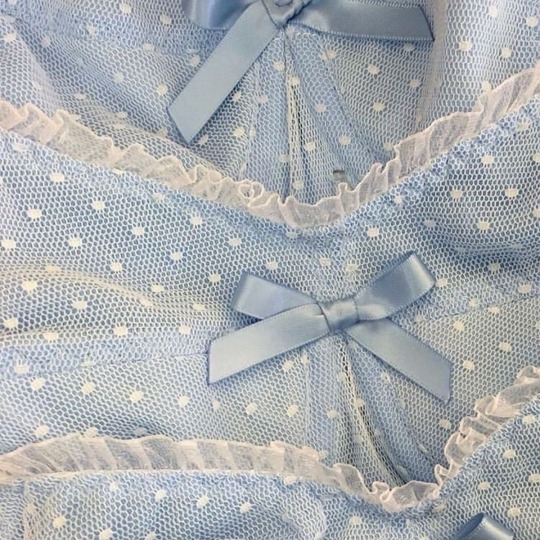


˗ˏˋ art deco ࿐ྂ "you're not mean, you're just born to be seen"
summary: kokonoi hajime unwillingly has front-row seats to sano "mikey" manjiro's descent into darkness and now he unknowingly watches the start of a new obsession with something a lot prettier that owns one too many mini skirts
pairing(s): kanto!mikey x f!reader
notes: told through koko's eyes and the beginning of yandere!mikey and pre-bonten. heart divider by cafekitsune
warnings: canon typical violence, mentions of weapons, mentions of murder, implied mental health issues, slight bimbo!reader, suggestive themes, mentioned voyeurism, obsession, future yandere(?), not edited we die like my potential
word count: 1690

Sano “Mikey” Manjiro was no longer the man he used to be. Perhaps after killing a bunch of people, part of him had gone numb. Or maybe most of him. He doesn’t feel the same way anymore and it’s clear to everyone around him. His black Toman jacket had been long changed to white and he’s got an appointment with a tattoo artist soon. Kokonoi wonders when it will be his turn to get tattooed next. He wonders when the matching jackets will be changed to suits and their flimsy pipes and bats will be replaced with guns. Kokonoi isn’t sure if he’s looking forward to it or not. Many things have changed quickly and so has Mikey.
Kokonoi Hajime accidentally got front-row seats to Sano “Mikey” Manjiro’s plunge into darkness and it’s not something very fun to watch especially since nothing he does can get the latter out of it. It was almost like Mikey wanted to burn. Like he enjoyed it. Kokonoi Hajime glanced up from his laptop, the soft glow of the screen illuminating his tired eyes. The rain outside pelted the floor-to-ceiling windows, a rhythmic drumming that filled the otherwise silent penthouse. Mikey stood motionless, staring out into the storm as if it held answers to the questions he never voiced. Kokonoi had grown used to this silence, the heavy, unspoken tension that seemed to hang over them like a dark cloud. “Mikey— Oh hi Koko!”
Maybe the only thing stopping Mikey from fully going crazy was you and your damn mini-skirt. You twirl into the room with that infectious energy of yours, your sneakers tapping against the marble floor. The rain pattering against the windows is almost drowned out by your cheerful presence. You greet Kokonoi with a bright smile, your eyes sparkling with a naivety that seems out of place in the world of the Kanto Manji Gang— in Sano “Mikey” Manjiro’s world. “Hi Koko!” you repeat, a playful lilt in your voice
Kokonoi can’t help but crack a small smile at your enthusiasm, the glitter in the inner corners of your eyes shining under the artificial light. You always manage to bring a bit of light into these dark times, even if you don’t fully understand the shadows lurking around you. Mikey, however, doesn’t move. His gaze remains fixed on the storm outside, his reflection a ghostly figure in the glass. Kokonoi watches him, the unease gnawing at him. Mikey's transformation from the once lively, mischievous leader of Tokyo Manji Gang to this silent, brooding figure of Kanto Manji Gang is unsettling. You flounce over to Mikey, your hips swaying with each step. You wrap your arms around him from behind, resting your cheek against his back. “Mikey, come on. You promised we’d watch a movie tonight” you whine, trying to coax him away from the window, glossy lips shifting into a pout
Mikey finally shifts, his shoulders relaxing slightly at your touch. He turns around, and for a moment, Kokonoi catches a glimpse of the old Mikey in the way his dark eyes soften when he looks at you. “Yeah, I did, didn’t I?” he says, his voice a low rumble.
Honestly speaking, in Kokonoi’s opinion, you were kind of a bimbo— in some sense that is. You were top of your class with the goal of getting into law school but here you were in a damn mini skirt, your bruised knees knocking against Sano Manjiro who is a literal fucking criminal. Maybe you have one of those weird fantasies of representing your criminal boyfriend in court. The problem with that though is you and Manjiro weren’t together. You were just a pretty distraction, someone who brought a flicker of life into Mikey’s darkened world, a role you played with such unknowing perfection that even Kokonoi found it admirable. The darkness that enveloped Mikey was thick, suffocating, but you… you seemed to be the only one who could penetrate it, if only slightly with your stupid mini skirt that hugged your hips and thighs so well. “Not feeling it?” You ask him innocently, the tips of your white sneakers knocking against his boots
Maybe you were a little stupid but other than academic smarts, you were emotionally smart too. You didn’t realize just who you were hanging around and what the penthouse you waltzed into was but you knew when Sano “Mikey” Manjiro wasn’t feeling well. Kokonoi admires that because he as well as the other top members of Kanto Manji Gang were yet to figure out Mikey’s emotions. “Not really” Mikey says, his fingers curl around your hip in an almost possessive manner, pulling you closer to him.
Kokonoi watches the exchange, feeling a pang of jealousy mixed with something he can't quite place. Maybe it's envy at your ability to reach Mikey in a way he can't, or perhaps it's frustration at Mikey's apparent detachment from everyone else. Kokonoi watches you wrap your arms around Mikey’s neck. The contrast between Mikey’s brooding presence and your bubbly aura is almost comical, like a scene from a twisted romantic comedy. Kokonoi can’t help but shake his head at the irony of it all. “What’s wrong, Mikey?” you ask softly, your voice laced with genuine worry.
Mikey’s gaze softens as he looks down at you, his thumb brushing against your cheekbone. “Nothing you need to worry about, sweetheart” he murmurs, pressing a tender kiss to your forehead.
Kokonoi watches the exchange, feeling a twinge of envy mixed with a hint of admiration. Despite everything, Mikey still had the ability to care for someone, even if it was in his own twisted way. You pout slightly, not satisfied with his vague answer. “But I do worry about you, Mikey. You know that,” you insist, your well-manicured fingers intertwining with his bruised fingers.
A small, almost invisible smile tugs at the corners of Mikey’s lips. “I know, babe. And I appreciate it” he says, sincerity ringing in his voice.
He leans down to press a lingering kiss to your lips, a silent promise of reassurance. Kokonoi can’t help but feel a pang of jealousy at the intimacy between you and Mikey. It’s not that he harbours any romantic feelings for Mikey himself, but rather he envies the connection you two share, a connection that seems to elude him in this world of darkness and violence. As you pull away from the kiss, a bright smile graces your lips once more. Your lip gloss is now transferred onto Mikey’s lips and he doesn’t seem to mind as he licks up the artificial taste, his eyes never leaving yours as he does. It was weird though— You and Mikey weren’t dating but you still kissed and cuddled and did other things like normal couples did. Mikey called you sweetheart, babe, baby, doll, angel and any other sweet endearment his tainted mind could think of but you both weren’t dating. You both aren’t dating but Kokonoi knows the bruises on your knees are from when Mikey’s got you on the floor between his legs and the scratches on Mikey’s back are from you being pinned beneath him. “I’ve been a little stressed though. Come help me out?” Mikey says to you, thumb rubbing away some of the lipgloss that smeared onto your chin when he kissed you
Kokonoi can imagine it clearly— you down on your knees on the hardwood floor in front of Mikey, your pretty eyes wide and watery with drool running down your chin and mascara smudged; your stupid mini skirt hiked up around your hips as Mikey made you take it. “Hm, m’kay” You answer a little too innocently for what Mikey was suggesting at
As Mikey guides you to another room in the penthouse, he looks over his shoulder. “Koko, make sure no one disturbs us”
“Got it boss” He answers, trying to sound as apathetic as possible
The lock on the door clicks and Kokonoi is already scrambling to find his headphones. He’s been a victim of getting hard off listening to your breathy moans and helpless whimpers too many times already and he’s still got work to do. Kokonoi wasn’t a huge fan of being a voyeur like the rest of the sickos and perverts Mikey let into Kanto Manji Gang after all. He barely gets his headphones in when he hears a breathy groan come from the other side of the locked door. He tries to focus on his work, to lose himself in the lines of code scrolling across the screen, but his mind keeps drifting back to the scene unfolding behind the locked door. He can almost picture it—the way you kneel before Mikey, your eyes wide with anticipation, your lips parted in a silent plea. He can hear the soft rustle of fabric as Mikey guides you, his voice low and commanding. It’s a scene that plays out in his mind with disturbing clarity, one that he wishes he could erase but finds himself unable to look away from.
Kokonoi Hajime unwillingly has front-row seats to Sano “Mikey” Manjiro’s descent into darkness. But it seems he’s watching an obsession grow as well.
An obsession that owns too many mini skirts and with a smile as bright as the sun.
Kokonoi wonders how long it will take for that obsession to grow into something unhealthy and something that starts to hurt you. But even as he wonders, a part of him knows that he’ll be there to witness it all. Because in this world of darkness and violence, there are few constants, and Kokonoi has unwittingly become one of them. So he continues to work, his fingers flying across the keyboard as he loses himself in the safety of his own little world, a world far removed from the chaos that surrounds him.
As the night wears on and the sounds from the other room grow louder, Kokonoi can’t help but feel a sense of resignation settle over him. Because in the end, he knows that you’re just as trapped as the rest of them, prisoners of their own making in a world where darkness reigns supreme.
#tokyo revengers#mikey sano#mikey x reader#sano mikey manjiro#tokyo rev#tokyo revengers fandom#tokyo revengers x reader#sano manjiro#sano manjiro x reader#manjiro sano#kanto manji gang#kanto mikey
536 notes
·
View notes
Text
Greenbelt Maryland. Or, how America almost solved housing only to abandon it.

**I AM NOT AN EXPERT! I AM JUST AN ENTHUSIST! DO NOT TREAT MY OPINIONS/SPECULATION AS EDUCATION!**
During the Depression America faced a housing crisis that rhymes with but differs from our own. It’s different in that there wasn’t a supply issue, there were loads of houses in very desirable areas, but they were still unaffordable as people’s incomes collapsed causing a deflationary spiral. While the housing supply subtly grew and succeeded demand, people simply couldn’t pay the meager rents and mortgages. Herbert Hoover failed to manage the Depression, while his inaction is greatly exaggerated, his policy of boosting the economy with works projects and protecting banks from runs failed and the depression only got more pronounced in his term. In comes Franklin Roosevelt, a progressive liberal much like his distant and popular cousin/uncle-in-law Teddy. Franklin’s plan was to create a large safety net for people to be able to be economically viable even if they’re otherwise poor. These reforms are called the New Deal and they did many controversial things like giving disabled and retired people welfare, giving farmers conditioned subsidies to manipulate the price of food, a works program to build/rebuild vital infrastructure, etc. One of these programs was the USHA (a predecessor of America’s HUD), an agency created to build and maintain public housing projects with the goal of creating neighborhoods with artificially affordable rents so people who work low-wage jobs or rely on welfare can be housed.
In this spirit, the agency started experimenting with new and hopefully efficient housing blueprints and layouts. If you ever see very large apartment towers or antiquated brick low-rise townhouses in America, they might be these. The USHA bought land in many large and medium-sized cities to build “house-in-park” style apartments, which is what they sound like. Putting apartment buildings inside green spaces so residents can be surrounded by greenery and ideally peacefully coexist. Three entire towns were built with these ideas outside three medium-sized cities that were hit hard by the depression; Greenbelt outside DC, Greenhills outside Cincinnati, and Greendale outside Milwaukee. The idea was to move people out of these crowded cities into these more sustainable and idyllic towns. There were many catches though, the USHA planned for these towns to be all-white, they used to inspect the houses for cleanliness, they required residents to be employed or on Social Security (which basically meant retired or disabled), they also had an income limit and if your income exceeded that limit you were given a two-month eviction notice, and you were expected to attend town meetings at least monthly. While the towns didn’t have religious requirements they did only build protestant churches. Which is an example of discrimination by omission. While a Catholic, Jew, Muslim, etc could in theory move into town they also couldn’t go to a Catholic church, synagogue, or Islamic center without having to extensively travel. Things planned communities leave out might indicate what kind of people planned communities want to leave out. Basically, the whole thing was an experiment in moving Americans into small direct-democracy suburbs as opposed to the then-current system of crowded cities and isolated farm/mine towns. This type of design wasn’t without precedent, there were famously company towns like Gary and Pullman which both existed outside Chicago. But those lacked the autonomy and democracy some USHA apparatchiks desired.
The green cities were a series of low-rise apartments housing over a hundred people each, they were short walks from a parking lot and roads, and walking paths directly and conveniently led residents to the town center which had amenities and a shopping district. Greenbelt in particular is famous for its art deco shopping complex, basically an early mall where business owners would open stores for the townspeople. These businesses were stuck being small, given the income requirements, but it was encouraged for locals to open a business to prove their entrepreneurial spirit. Because city affairs were elected at town meetings the city was able to pull resources to eventually build their own amenities the USHA didn’t originally plan for like a public swimming pool or better negotiated garbage collection.
These three cities were regarded as a success by the USHA until World War II happened and suddenly they showed flaws given the shift in focus. These towns housed poor people who barely if at all could afford a car, so semi-isolated towns outside the city became redundant and pointless. The USHA also had to keep raising the income requirement since the war saw a spike in well-paying jobs which made the town unsustainable otherwise. During the war and subsequent welfare programs to help veterans, these green cities became de facto retirement and single-mother communities for a few years as most able-bodied men were drafted or volunteered. Eventually, the USDA would make the towns independent, after the war they raised the income limit yet again and slowly the towns repopulated. As cars became more common and suburbanization became a wider trend these towns would be less noticeably burdensome and were eventually interpreted as just three out of hundreds of small suburban towns that grew out of major cities. They were still all-white and the town maintained cleanliness requirements; after all they lived in apartments it just takes one guy’s stink-ass clogged toilet to ruin everyone’s day.
By the 1950’s these towns were fully independent. Greendale and Greenhills voted to privatize their homes and get rid of the income limit all together so the towns can become more normal. Greenhills, Ohio still has many of these USHA-era houses and apartments, all owned by a series of corporations and private owners. Greendale, Wisconsin property owners have demolished most of these old houses and restructured their town government so most traces of its founding are lost. But Greenbelt, Maryland still maintains a lot of its structure to this day. Greenbelt has privatized some land and buildings, but most of the original USHA apartments are owned by the Greenbelt Homes, Inc cooperative which gives residents co-ownership of the building they live in and their payments mostly go to maintenance. Because Greenbelt was collectively owned the House Un-American Activities Committee would blacklist and put on trial most of Greenbelt’s residents and officials. Though they didn’t find much evidence of communist influence, the town was a target of the red scare by the DMV area, residents were discriminated, blacklisted, and pressured into selling their assets. While Greenbelt did commodify some of the town, the still existing co-ownership shows the town’s democratic initiative to maintain its heritage. The green cities desegregated in the 50’s and 60’s depending on state law, Greenbelt was the last to desegregate under the Civil Rights Act of 1964, while discrimination persisted for years by the 1980’s the town would become half non-white, today the town is 47% black and 10% Asian.
Though these towns largely integrated with a privatized and suburbanized America, they do stand as a memorial to an idea of American urbanism that died. They were designed for walkability and were planned to be more democratic and egalitarian towns, with the conditions that came with segregation and government oversight. You can’t ignore the strict standards and racism in their history, but you can say that about many towns. How do you think America would be different if more cities had green suburbs that were more interconnected and designed for community gatherings?
#urbanism#DC#maryland#dmv#Cinncinatti#milwaukee#ohio#wisconsin#New Deal#history#fdr#franklin roosevelt#politics#urban#city#apartment#housing#great depression#article#co op#socialism#segregation#discrimination#housing crisis#landlords#united states
212 notes
·
View notes
Text


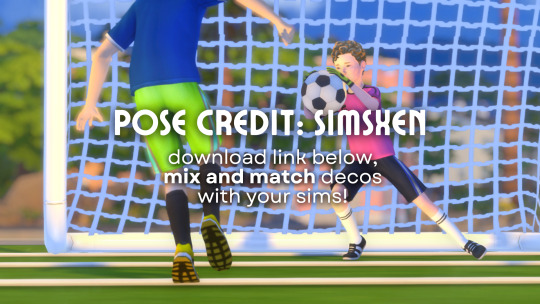
[armoricaRoyalty] Soccer Kids Deco Sims
14 new deco sims to fill out your parks and community centers. These decos are around 11k polys each, with all LODs.
Thank you to @simsxen, who gave me permission to use her longshot poses to make these decos!
These decos can be mixed and matched with posed sims to fill out a whole soccer team
The jerseys are from the Get Together pack, and all other items are BG
The sims have six swatches each (2 swatches per team, 3 total swatches per goalie)
Open TOU, but don't include them in paywalled builds!
I used the soccer goals by @aroundthesims in the previews.
Special shout-out to @xldkx over at @thefoxburyinstitute for her deco sim guide!
Download: SFS | Google Drive (no ads)
ETA: If you'd like some additional child soccer decos to fill out the roster, check out this set by @madebycoffee!
Got an idea for deco sims? Share it here.
@ts4-poses, @alwaysfreecc, @maxismatchccworlds
#sims 4 custom content#sims 4 cc#deco sims#my cc#I made these for a story post and wasnt initially going to share it until after the story post was live#but what the heck whats mine is yours
151 notes
·
View notes
Text

The Sims 2 to The Sims 3 - Paintings | Garden of the Gods
A mythical set of posters converted from simsinlowspace! 📜
💾 Download: SFS
Info below:
For my followers that have been around since the ancient times of 2022, you might remember these as one of my Simblreen 2022 gifts. It had been my goal to share these widely again but as you can probably tell, I forgot to do that with most everything I convert/make a lot of things. Well, they're here now (again! and in package format!) :) As a huge fan of Rick Riordan's work, these fit in well anywhere for me but your bookish/historian sims will love them too. 💖
These are converted from the TS2 originals by Spacey at simsinlowspace.tumblr.com
✨ You can find all of my previous uploads conveniently by clicking “Navigation” on my blog and going to “Downloads” or visiting riverianepondsims downloads
Since these are TS3 posters, there is just one catalog entry for all fifteen, with their swatches included. They are fully shiftable and are not recolorable, though they have one recolorable channel just in case.
Garden of the Gods
Price: §360 | Location: Deco, Wall Hangings
🔍 Search: Now that there is a catalog search mod, you can find these posters easily in buy mode by searching for riverianepondsims, simsinlowspace, mythical, garden, gods, 2022.
💾 Download: SFS
📜✨🏛️
72 notes
·
View notes
Text
Viktor is literally art nouveau
I was looking at Viktor's design in league of legends and it hit me, Viktor in Arcane IS Art Nouveau
Not literally but yes literally in a way lmao
Let me walk you through my thought process
I was looking at the league of legends design, and I thought that the fact that Viktor still had hair was weird if the whole point of Viktor is human bad machine good, then why does he has something as human as hair?
Then I thought about the Arcane Herald design, and it actually made more sense that this Viktor still had hair, why? Just look at his robots

The first thing that called my attention was their shoes, because those aren't normal heels, no, those are heelless heels! and let me tell you
1) Viktor isn't straight (no straight man would know and like those shoes, you can't fool me)
2) That's like the worst shoes you could ask for to fight/run in, do you know how easy is to fall with those shoes? No, they aren't practical, those shoes are merely for visual pleasure
And it doesn't seems like Viktor would be the kind of man that would put looks above functionality but then you think about how his designs in general have a very heavy preference for art nouveau; which, is also very much beauty over function
His robots have the asymmetry, A flowing organic shape, a preference for a feminine figure, the reference to flora on the patterns. They're are art nouveau bots and theres no way to deny that, and Viktor's Herald design is too, to some extent

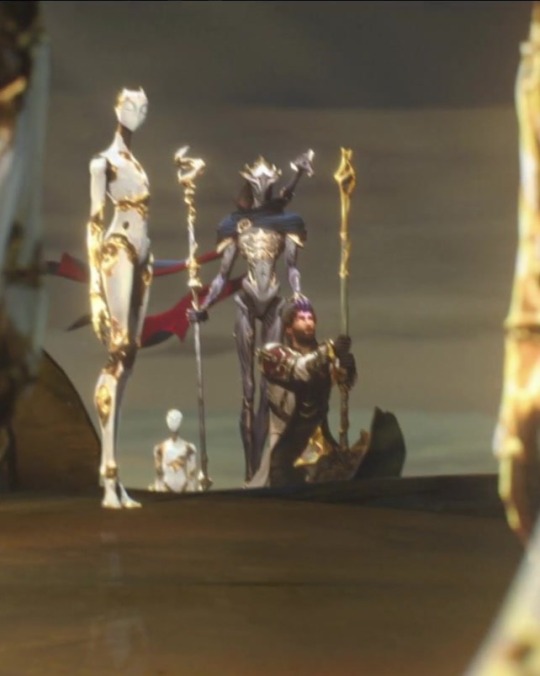
Again, preference for a feminine figure, flowing organic shapes, his staff looks like a tree (kinda), asymmetry to some extent (not as much a his robots), hair (very important). You can reasonably say that it was at least inspired by art nouveau
Then we have the design of his room/house in the commune, it's pretty much art nouveau inspired too. I've seen some people say that Viktor made this to reference the Hexgates because he missed Jayce, but now I'm thinking, what if it wasn't that he missed Jayce, but more that the Hexgates were originally his design
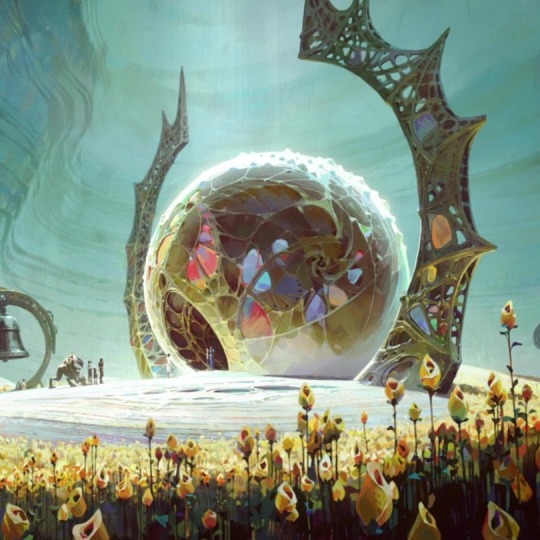

And listen, I know I know, both worked on the hexgates, both should be credited equally, but realistically, I think it's fair to say that both of them probably had different levels of involvement on different things? So what if Viktor was the one with the original idea for the outside design and Jayce then added the art deco elements? Then Viktor repeated it on the commune with a more art nouveau style simply because he likes it?
And you might ask. Why does it matters? Why does the fact that Viktor likes art nouveau means that he's the personification of art nouveau?
Well; now to the point, I studied a little of art history on college, and I was a bit obsessed with art nouveau back then, and you know what was the goal of it?
Art nouveau was made to bring art to the common person, to have every day objects being a piece of art. It was supposed to get art away from the rich and to give it to everyone. But it failed
And you know why Art Nouveau failed and was quickly abandoned?
Two things, 1) it was too expensive, and 2) World War 1
So ironically Art Nouveau ended up being too expensive to reach the people they wanted to help so it stayed a rich people thing, and then it had to be abandoned almost completely because of WW1; there weren't enough materials to make it and a lot of people that became poor because of the war didn't have the money to spend on it
It was very short lived even when it made a big impact on history (That reminds me of someone)
Now compare art nouveau's history to what happened to Viktor (And Jayce)
They wanted to make magic accessible to the common people, to help; but it ended up being so that Hextech only helped people in Piltover to get richer while people in Zaun got worse and worse
Then something happened, a war, and both Viktor and Jayce had to abandon their dreams
Add to that the name art nouveau means new art, and in Spain it was called "Modernismo" Why? Because it wanted to be the future of art, young, refreshing, a bright future different from the past. Who else wanted to be the future of something? Men of progress who?
Viktor (and Jayce to some extent but I think he's more art deco lmao) IS Art Nouveau. It's his story
(And funnily enough, you can find art nouveau in Zaun, but I don't remember ever seeing art deco in Zaun, while it's the main thing on Piltover)
(Also also, I have some thoughts about Jayce being Art Deco, but that's for maaaybe later lmao)
Listen I'm a death of the author guy, I'm going to find meaning on my own. But either someone in the art department had to know the history of art nouveau and made a point of making it Viktor's main style (because it is Viktor's style, like I showed before), or it's just an extremely funny and fitting coincidence
#ramblings#arcane#viktor#viktor arcane#viktor league of legends#league of legends#Jayce Talis#arcane meta#arcane analysis#That moment when art nouveau and art deco are boyfriend lmao
75 notes
·
View notes
Text
🎀🍓 INTRO: 💣🎀
Hii you can call me Berri/ Bombz and I'm 14 :3
Disclaimers: I'M IN RECOVERY NOW :D
NOT PRO £d WHATSOEVER! Block don't report :)
I have really bad social anxiety so if you dm me it'll take a while for me to respond T-T
If you're 18+ please send an ask before you want to dm me :]

Important links:
🎀💣🍓Back-up tumblr🍓💣🎀
🎀💣🍓Strawberri's rules🍓💣🎀
🎀💣🍓Raccoon photos daily🍓💣🎀
🎀💣🍓Things to do instead of binging🍓💣🎀
🎀💣🍓Deco my Christmas tree🍓💣🎀
🎀💣🍓Songs🍓💣🎀
Basic info:
She/ They, lesbian, INTP, Leo, ßv|1m1©, raccoon therian, British, like and reblog to be moots :P
Likes:
My gf, strawberries, raccoons, sanrio, anime, genshin, music, ACNH, video games, sleeping, losing weight :D
Dislikes:
Food, homophobes, school, my dad, gaining weight :C
My tags:
#strawberri bomb - Every post ever on my blog
#🍓💣 - Posts written by me
#rebombs 🍓💣 - Reblogs
#my angel 🍓🎀 - My girlfriend
#usernames 🍓🎀 - Origins of usernames
#30 days 🍓🎀 - 30 day thinspo challenge
#🍥🎀 - Anon
#mentions 🍓🎀
#asks 🍓🎀
#food 🍓🎀
#vent 🍓💣
#ed 🍓💣
Social media:
🎀🍓 Spotify 💣🎀
🎀🍓 Twitter 💣🎀
🎀🍓 Pinterest 💣🎀
🎀🍓Discord💣🎀
Stats:
My mum took my scale help T-T
Height - 163.5cm
Highest weight - 63 kg
Lowest weight - 40 kg
Current weight - 44.05 kg
Goal weight 1 - 60 kg 🎀
Goal weight 2 - 55 kg 🎀
Goal weight 3 - 50 kg 🎀
Goal weight 4 - 45 kg 🎀
Goal weight 5 - 40 kg
Goal weight 6 - 35 kg
Ultimate weight - 30 kg
ANY SORT OF BIGOTS DNI PLZ >:(









(Bottom divider by Silas :3)
#strawberri bomb#🍓💣#⭐️rving#⭐️ ing motivation#⭐️vation goals#4nor3xia#4norexla#⭐️ve#anor3c1a#anorexla#skin&🩻#skinnnyy#skin&bones#tw skipping meals#skinandbones#💡 as a feather#light as a 🪶#🕯️ as a 🪶#light as a feather#3d but not sheeren#tw ed but not sheeran#@na tips#@ana#@n@#@nor3xia#@nor3×14#@n@ diary#@na vent#soupinmyshoes#sk11ny
130 notes
·
View notes
Text

Source
29 notes
·
View notes
Text
Poll at the end, please read entire post
I've been asked recently to create/share posts by several Palestinian bloggers on here, but since I haven't had the time to create a post for each person I thought it would be more efficient to compile a handful of them here.
@familgazaamal1, verified by association, 30% of goal, gfm link
@kawlafamily90, verified by association, 53% of goal, gfm link
@fatima-2024f/@siraj2024s, verified (#219 on verification list), 3% of goal, gfm link
@reem-reem-2, verified (#764 on ButterflyEffect list), 7% of goal, gfm link
@wasimhourani1, verified (#290 on GazaVetters list), 7% of goal, gfm link
@jafaar-gaza08, verified (#299 on Gazavetters list), ~1% of goal, chuffed link
taglist (dm to remove):
@floof-ghostie @insomniac-jay @chiisana-lion @deargravity @chivalrixx @mayoi-lover @sanaimissyou @skysouls
#some of the gfms wrote out the currency in what i believe was german so I just did the goal percentage instead of money amount#palestine#free palestine#polls#important#fundraiser#save palestine#palestine fundraiser#chuffed
91 notes
·
View notes
Text





Happy November, everyone! Here's a late collection of the icons that I've been using for the last few months. The lines and dots one is the new one! I saw some Art Deco wood carving recently that was cool and wanted to borrow the style.
The rubber duck cassowary is from July, because a loved one is really into ducks recently. The black and white cassowary is from August, for no particular reason. The Starfleet cassowary is from September, because we started doing a catch-up on things like "Strange New Worlds", "Lower Decks", and "Discovery". The cassowary made of dots is from October, just because I saw another piece of art that I liked.
Fandom news: I finally finished "Some Unknown Corner", my Qijiu reunion fix-it fic!!! Which took me WAY longer than initially expected. Part of it is that I've been spending more time with family lately (saw some people I hadn't seen in years last month), which means less time to write but has been very nice, and part it of seems to be that I'm just a little busy and burnt out at the moment.
I'm not currently planning on joining any fandom events at the moment, or making any firm fic plans; I'm letting loose and just relaxing. I will be TRYING not to be possessed by some unwieldy project. Trying!!! I'm definitely not (intentionally) writing any novels this month. For now (at least the next couple months), I don't think I'll be posting any new fic unless it's a short one-shot or already complete longfic. November and December tend to be some of the busier months in my personal life. I have some WIP projects for other fandoms that I'd like to shove out the door and use to cleanse my palate a little, but again, the main goal right now is taking it slow.
If you have a fandom project right now that is stressing you out, I offer you permission from a random stranger to take a break from it, if you want one! Enjoy a nap on the couch and some good food and a walk, if you can and if you like! Fic will wait.
Thank you for all the lovely comments and messages and such! I appreciate them very much and will be trying to casually catch up on those again. ❤️❤️❤️
84 notes
·
View notes
Text






















11 Days Of Deco Sims, DONE!
We have made it to the end! In total I received probably around 50 requests this past summer and I ended up filling 18 of them. I had already decided this before my Dad died in the middle of working on them, but I will not be doing this event again lmao. Sometime this weekend I'll get all of these sims linked on my Downloads page.
I have a small self imposed goal that I'd like to share another bit of CC this month, but it won't be poses or deco sims. 👀so look forward to that.
BTW, I have made and shared out around 500 decosims now. (nearly half from just this event) SO if you are in need of some do look through my Downloads page. You can filter just by decosims. There might be something you need on there!

this is a link to my kofi if u appreciate what i do.
2023's 11 Days of Decos
66 notes
·
View notes
Text
HOUSE? — hogwarts scripting guide.
as we‘re all aware there are four different hogwarts houses; in this post i’ll guide you through their traits, weaknesses etc. to help you chose one for your dr ! remember this is based on what i think, not literal facts.
traits ; positive or neutral aspects that describes how sm acts
weaknesses ; areas where a person might struggle
random ; random things that remind me of the houses
songs ; songs that remind me of the houses
GRYFFINDOR.
traits: fearless spirit, passionate, willing to stand up for themselves, adventurous, bold, driven by a strong moral compass, loves challenges, enjoys leadership, doesn’t mind taking risks, loves the idea of protecting others and fighting for themselves, quick to act, often relies on their instincts, brave, strong sense of justice, naturally charismatic, direct
possible weaknesses: acts before thinking, impulsive, can overlook details, recklessness, may struggle to back down in arguments, sometimes overlay idealistic, prone to taking too much to prove themselves
random: campfires. superhero movies. red. lions. espresso. fireworks. rivers. escape rooms. leather jackets. motorcycles. snowball fights. comics.
songs: everybody wants to rule the world - tears for fears. die w a smile - bruno mars. right now - one direction. wide awake - katy perry. pride - kendrick.
HUFFLEPUFF.
traits: heart & soul of hogwarts, compassionate, known for their dedication, approaches everything w patience and perseverance, hard worker, fair, patient, loyal, kind, quick to forgive, willing to give second chances, willing to put in effort, stays consistent till they succeed, good listener, harmonious, grounded
possible weaknesses: puts others‘ needs above theirs, tendency to be underestimated, may seem as naive, struggles w setting boundaries, may avoid the spotlight even when they deserve it
random: bakeries. board games. flower field. yellow. gardening. herbology. dogs. honey. pottery. family albums. road trip playlists. popcorn. stickers.
songs: why i love u - jayz. me myself n i - bebe rexha. wildflower - billie eilish. again - noah cyrus. my blood - ellie goulding.
SLYTHERIN.
traits: stragetic, values success, has clear sense of their goals and how to achieve them, resilient, adaptable, resourceful, doesn‘t shy away from things they want, self-motivated, strong sense of determination, can thrive under pressure, can read people like books, smart
possible weaknesses: selfish, competitive, trust issues, prefers to work alone, secretive, vulnerable, doesn’t ask for help, jealous
random: chess. black cars. green. goth. statues. wine. chocolate. secret diaries. crowns. luxury hotels. rare gemstones. spy novels.
songs: give me everything - pitbull. supermassive black hole - muse. jealousy - tnbh. ultraviolence - ldr. chihiro - billie eilish. heartbeat - cg.
RAVENCLAW.
traits: intelligent, creative, wise, curious, loves exploring, good analyst, can easily solve problems, values personal space, enjoys intellectual pursuits, open minded, observant, often philosophical, quality over quantity, amazing memory, drawn to abstract thinking
possible weaknesses: may seem aloof or emotionally distant, self-critical, burnouts, overly perfectionist, socially withdrawn, too introspective
random: library. ink. blue. night sky. music notes. art. operas. documentaries. fashion shows. poetry. birds. podcasts. mascara. tea.
songs: wicked game - chris isaak. art deco - ldr. glory box - portishead. softcore - tnbh. mind games - sickick. chihiro - billie eilish.
#nondualism#shifting consciousness#shifting#shifting script#shifting antis dni#shifting diary#shifting community#shifting motivation#shifitng#reality shifting#desired reality#dr#4d reality#manifestation blog#manifesting#manifesation#scripting#scripting ideas#shiftblr#scriptwriting#script#script ideas#hogwarts#hogwarts houses#hogwarts school of witchcraft and wizardry#shifting to hogwarts#hogwarts dr#hogwarts script#harry potter dr#houses
100 notes
·
View notes